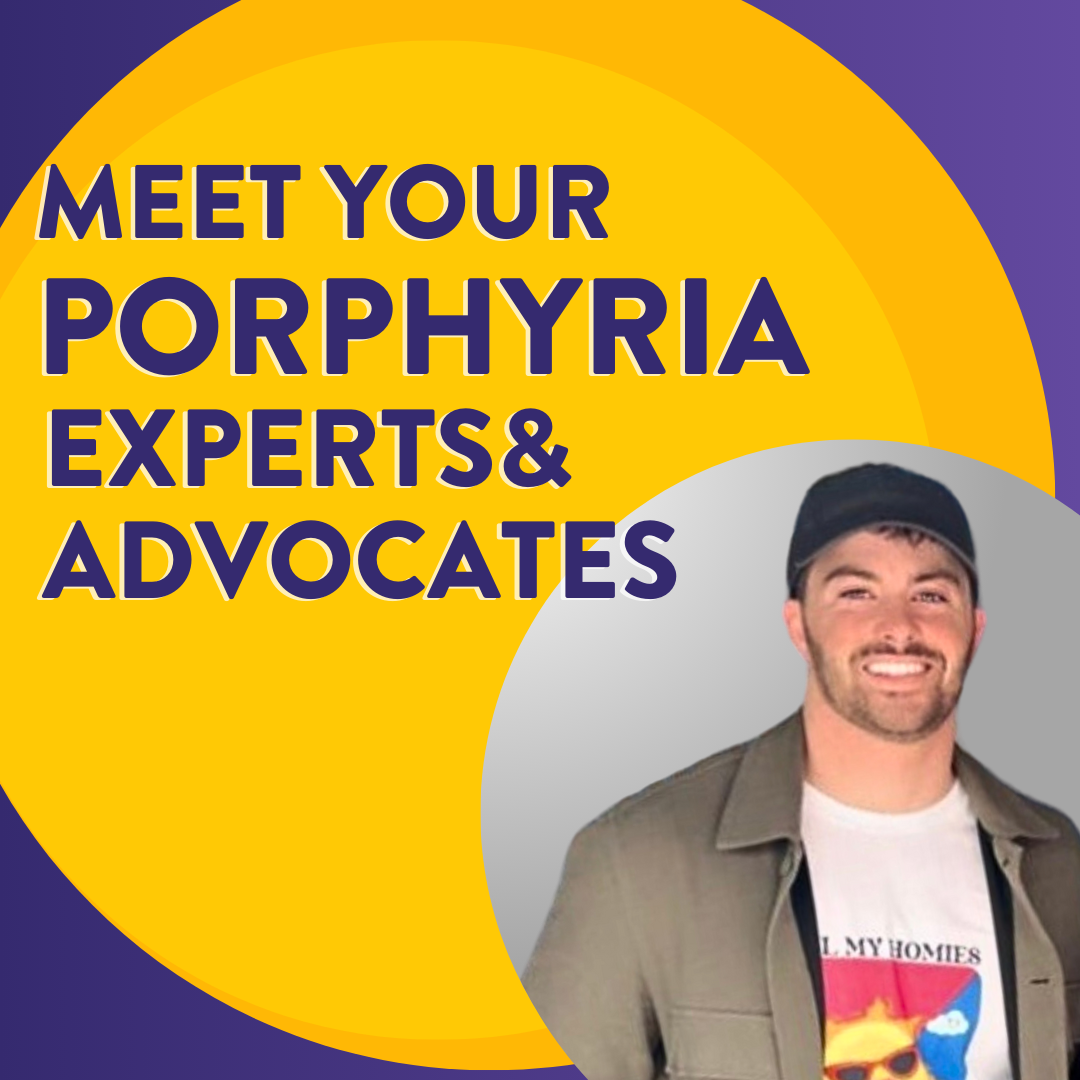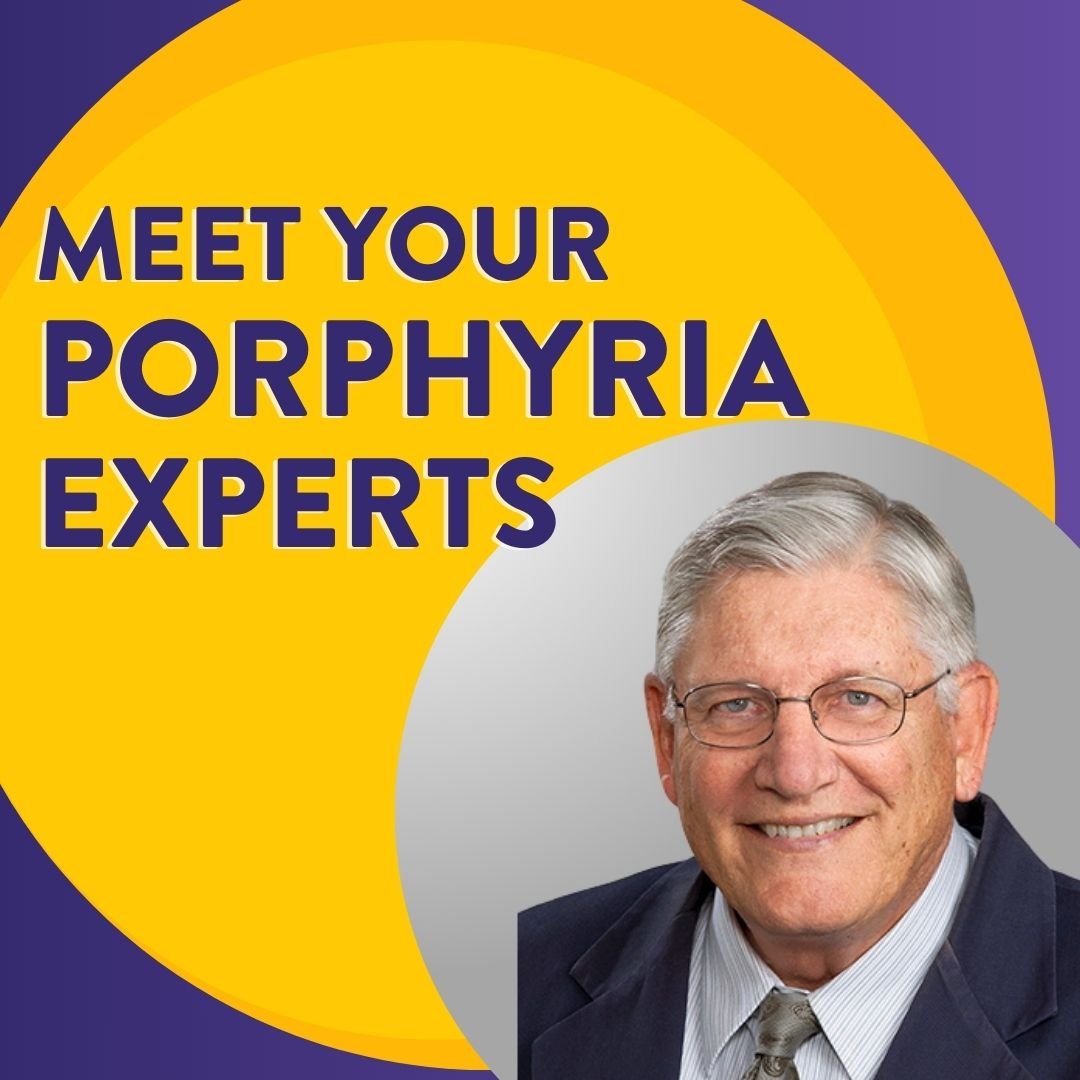Meet Dr. Herbert Bonkovsky
The porphyria community is lucky to be supported by dedicated physicians, researchers and advocates who work tirelessly to improve care and develop new treatments for porphyria. The United Porphyrias Association is pleased to introduce you to some of them!
With rare diseases, you could call every patient a clinical trial of one because each one is unique. It is important to listen to them and try to address their symptoms
-Dr. Herbert Bonkovsky
Could you introduce yourself and tell us a bit about your connection with porphyria?
My name is Herbert Bonkovsky and I’m currently Professor of Medicine and Molecular Medicine and Translational Science at Wake Forest University School of Medicine. I'm also an attending physician at Atrium Health Wake Forest Baptist and based in Winston-Salem and in Charlotte, NC.
I've worked on the porphyria from the time I was a Clinical Associate at the National Institutes of Health in the late 60s to early 70s. At the time I worked in a laboratory that was focused on understanding the regulation of porphyrin and heme metabolism, and particularly the role of ALA-synthase which is the first and rate-controlling enzyme for porphyrin and heme synthesis.
I was the first person to give intravenous heme to a patient with acute porphyria in 1970. It is still the treatment of choice for acute attacks of porphyria. I also was the first to demonstrate that a deficiency in the enzyme ferrochelatase is responsible for EPP.
I work chiefly in hepatology and see patients with many types of liver disease, but I still have an active interest in porphyrias and trying to help patients with porphyria.
As you mentioned, you’ve been involved in studying and treating porphyrias for a long time. From your perspective how have things changed for porphyria patients in that time?
I think our understanding of the porphyrias has advanced considerably during the past 50 years, particularly the importance of avoiding dangerous drugs in the acute porphyrias. The decreased use of drugs like barbiturates has led to fewer and less severe attacks. The use of heme and better management in the intensive care unit have also reduced severe attacks and I’ve been happy to see these advances.
There is now genetic testing available to make a more firm diagnosis and to help identify porphyria in family members.
In those years we’ve also realized that liver transplantation is curative of acute intermittent porphyria, and of course now there is givosiran, which is a welcome development.
In the case of porphyria due to a severe deficiency in ALA-dehydratase (ADP) and in congenital erythropoietic porphyria (CEP), there are still a lot of challenges in treating these conditions. Gene therapy will probably be required for real benefits. Liver transplantation doesn’t seem to help with ADP and bone marrow transplant, which can be curative for CEP, as well as EPP and XLP is very risky and isn’t usually recommended.
Are you currently involved any research?
I'm mainly working now on clinical studies of bitopertin, a promising new drug to ameliorate EPP and XLP. There’s also an investigation, being spearheaded by Dr. Dickey on the possible benefit of cimetidine in EPP and XLP. Beyond that I am also involved in research on other liver conditions such as fatty liver disease.
What have you learned from working with patients over the years?
We continue to learn many things from patients. With rare diseases, you could call every patient a clinical trial of one because each one is unique. It is important to listen to them and try to address their symptoms.
There are still so many mysteries about porphyria. What leads to attacks? Why do some patients have chronic pain? These questions continue to be a challenge for us and a challenge for patients.
Do you have any advice for patients who might want to advocate for themselves or get involved in research?
I strongly encourage them to support the United Porphyrias Association, with the time, talent, substance, influence that they can afford to provide.
The other big thing is to urge them to consider and, if possible, participate in clinical studies. Generally, if you know the clinical study has been approved by local or national institutional review boards, the patients can be reassured that there’s good safety. It is only through participation in well-designed and well-run studies that the next advances for helping them or even more for helping future patients will be achieved.













